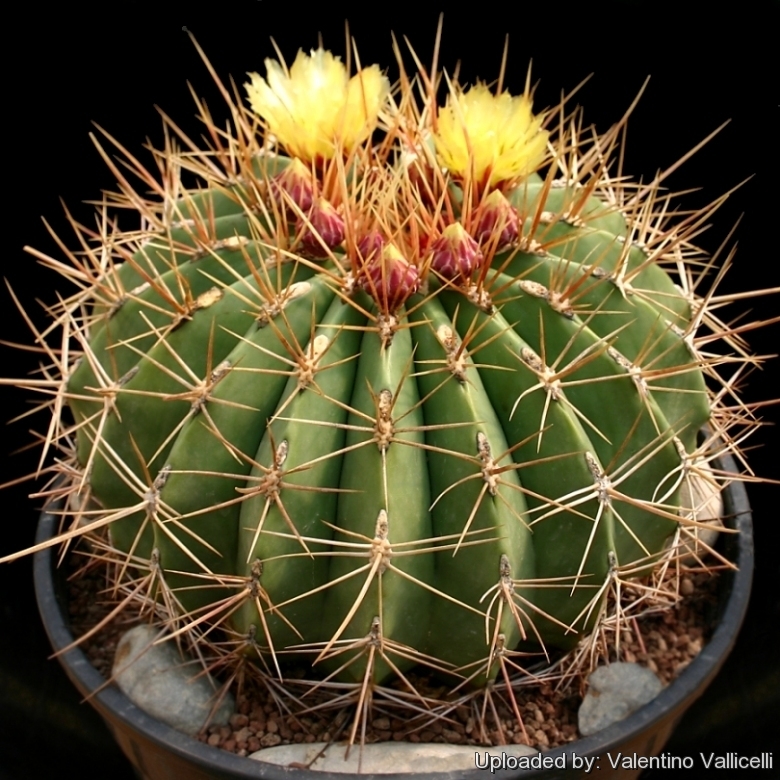
Ferocactus alamosanus Photo by: Valentino Vallicelli
This rare and distinctive barrel cactus has relatively delicate spines for a Ferocactus, and is very hard to find a good size plant like this in cultivation.
Origin and Habitat: Ferocactus alamosanusSN|1694]]SN|1694]] ( comprising subsp. reppenhagenii) is known only on the western edge of the Sierra Madre Occidental in the Álamos area in southeastern Sonora and adjacent Chihuahua (atates of Chihuahua, Sinaloa and Sonora, Mexico).
Altitude: 450-1300 metres above sea level.
Habitat and Ecology: The species occurs in upper tropical deciduous forests up to pine-oak forests. Known only from a restricted area this species is not very common and is said to be heading for endangered species list. It has a small number of populations (less than 10 locations). The habitat of Ferocactus alamosanusSN|1694]]SN|1694]] is home to succulent flora and is particularly rich in local endemics such as: Echinocereus subinermisSN|21769]]SN|16544]], Echinocereus stoloniferusSN|16544]]SN|21769]] and Marshallocereus thurberiSN|8268]]SN|8268]].
Synonyms:
Description: Ferocactus alamosanusSN|21495]]SN|1694]] is small barrel cactus, usually solitary but sometimes clumping.
Stem: Depressed globose to shortly cylindrical, up to 30 cm in diameter, 25 cm tall, occasionally much taller;
Ribs: 12-20 narrow, acute ribs.
Spines: Needle-like. Densely intermeshed with a reddish tinge in the new growth
Central spine: 1, sometimes flattened, up to 6 cm long;
Radial spines: 8, straw-coloured, 3 to 4 cm long .
Flowers: Wide open greenish yellow, up to 45 mm long, 35 mm in diameter. The petals are spatulate and broad.
Fruits: Dull brown-red fruits splitting open when ripe.
Remarks: This species has been considered a variety of Ferocactus pottsiiSN|1694]]SN|15546]] (Salm-Dyck) Backeb., but based on morphology and habitat they are best considered as separate species. Therefore Ferocactus pottsiiSN|15546]]SN|15546]] does not belong to the complex with Ferocactus alamosanusSN|15546]]SN|1694]]. It has to be excluded here and transferred in the group with Ferocactus emoryiSN|1694]]SN|21495]] etc. Two subspecies are recognized, the nominate form and subsp. reppenhagenii (G.Umger) N.P.Taylor. The subspecies 'alamosanus' has usually about 20 acute ribs, heavy spination, and only grows to 25 cm high. The subspecies 'reppenhagenii' has 12-18 rounder ribs and connecting areoles and will grow up to about 70-100 cm).
Subspecies, varieties, forms and cultivars of plants belonging to the Ferocactus pottsii complex
(This Taxon belong to a group of six closely allied species. The group is: Ferocactus alamosanus, Ferocactus schwarzii, Ferocactus reppenhagenii, Ferocactus glaucescens, & Ferocactus echidne)
Bibliography: Major references and further lectures
1) Edward Anderson “The Cactus family” Timber Press, Incorporated, 2001
2) James Cullen, Sabina G. Knees, H. Suzanne Cubey "The European Garden Flora Flowering Plants: A Manual for the Identification of Plants Cultivated in Europe, Both Out-of-Doors and Under Glass" Cambridge University Press, 11/Aug/2011
3) David R Hunt; Nigel P Taylor; Graham Charles; International Cactaceae Systematics Group. "The New Cactus Lexicon" dh books, 2006
4) N. L. Britton, J. N. Rose “The Cactaceae. Descriptions and Illustrations of Plants of the Cactus Family.” Volume 4, The Carnegie Institution of Washington, Washington 1923
5) Van Devender, T. 2013. Ferocactus alamosanus. In: IUCN 2013. "IUCN Red List of Threatened Species." Version 2013.2. <www.iucnredlist.org>. Downloaded on 08 January 2014.
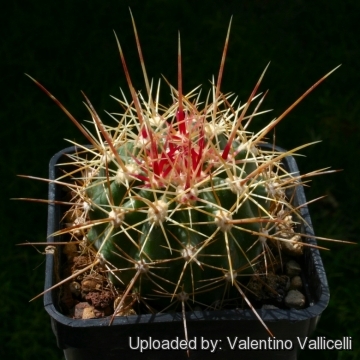 Ferocactus alamosanus Photo by: Valentino Vallicelli
Ferocactus alamosanus Photo by: Valentino Vallicelli Ferocactus alamosanus Photo by: Valentino Vallicelli
Ferocactus alamosanus Photo by: Valentino Vallicelli Ferocactus alamosanus Photo by: Cactus Art
Ferocactus alamosanus Photo by: Cactus Art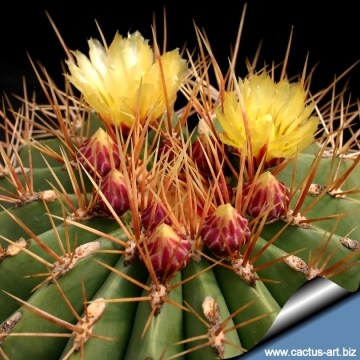 Ferocactus alamosanus Photo by: Cactus Art
Ferocactus alamosanus Photo by: Cactus Art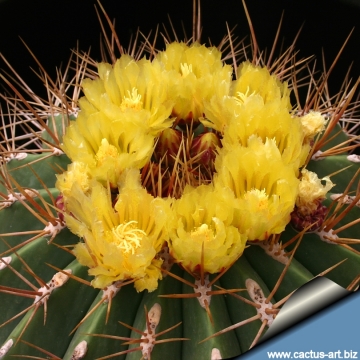 Ferocactus alamosanus Photo by: Cactus Art
Ferocactus alamosanus Photo by: Cactus Art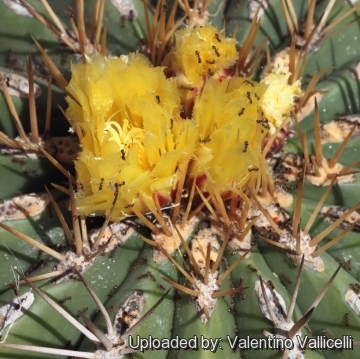 Ferocactus alamosanus Photo by: Valentino Vallicelli
Ferocactus alamosanus Photo by: Valentino Vallicelli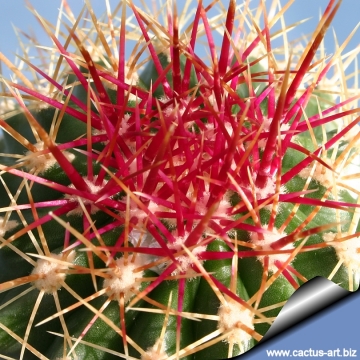 Ferocactus alamosanus Photo by: Cactus Art
Ferocactus alamosanus Photo by: Cactus Art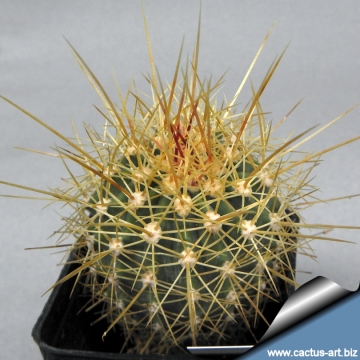 Ferocactus alamosanus Photo by: Cactus Art
Ferocactus alamosanus Photo by: Cactus ArtCultivation and Propagation: They are summer-growing and pretty easy plants thought slow to start. They are suited for any rich, well drained soil such us clay, pumice, lava grit, and only a little peat or leaf-mould. If potted, repot them preferably in the spring, if their roots become cramped. Generally, they should be repotted every other year in order to provide fresh soil. However, this doesn't necessarily mean they'll need larger containers. Fill about a quarter of the pot with broken crocks, gravel, etc. to promote good drainage. After repotting, do not water for a week or more. Water regularly during the aestival growth cycle (this plant need plenty of water, but do not overwater and let their soil dry out between waterings), and also needs to be avoided wetting the body of this plant while it is in sunlight. A wet cactus in the sun light can cause sun burning which can lead to scars or even fungal infections and death, keep rather dry in winter. No water should ever be allowed to stand around the roots. Feed with a high potassium fertilizer in summer.
Exposure: Outside they need a bright exposure, full sun or half shade in summer if the location is exceedingly hot or bright, inside needs bright light, and some direct sun. It can tolerate moderate shade, and a plant that has been growing in shade should be slowly hardened off before placing it in full sun as the plant will be severely scorched if moved too suddenly from shade into sun.
Frost Tolerance: Light frost protection required for safe cultivation, but can tolerate sporadic light frost. This plants need a period of cool rest in winter to produce flowers abundantly.
Diseases and pests: Watch for infestations of mealybug, scale insects and spider mite. Plant in good conditions will start to bloom when reach the diameter of only 15-18 cm.
Propagation: Seeds are the only way of reproducing.
Seed Collecting: Permit fruit to ripen. Fruit must be significantly overripe before harvesting seed; clean and dry seeds
Your Photos
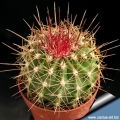
by Cactus Art

by Valentino Vallicelli




















